Search Images
Browse Content (p. 881)
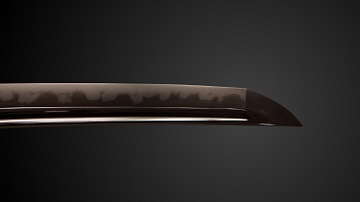
Image
Hamon of a Samurai Katana Blade
The blade of a samurai sword, the katana, displaying the distinctive wavy hamon or temper pattern used by Japanese swordsmiths to identify their work. 1501 CE. (Guimet Museum, Paris)
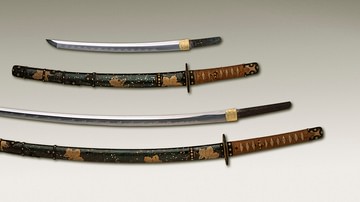
Image
Samurai Swords
Two steel-bladed Japanese samurai swords: the longer katana and shorter wakizashi. 18-19th century CE. (Los Angeles County Museum of Art)
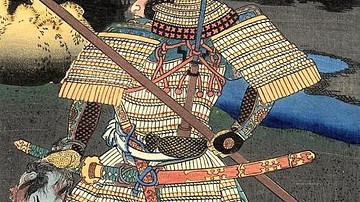
Image
Samurai Onikojima Yataro Kazutada
A mid-19th century CE woodblock print by Utagawa Kuniyoshi of the samurai Onikojima Yatarô Kazutada (1522-1582 CE). (Private Collection)
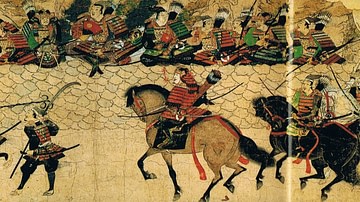
Image
Mongol Invasion of Japan, 1281 CE
A detail showing the failed Mongol attack on the defensive walls of Hakata, Japan in 1281 CE. From the Mongol Scroll, aka the 'Illustrated Account of the Mongol Invasion of Japan.' Commissioned by Takezaki Suenaga, 1293 CE.
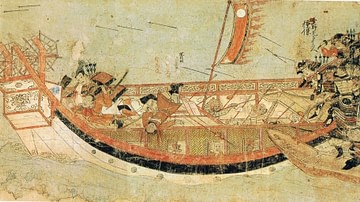
Image
Japanese Samurai Attack Mongol Ships
A detail showing Japanese samurai attacking a much larger Mongol ship during the failed invasions of Japan in 1274 and 1281 CE. From the Mongol Scroll, aka the 'Illustrated Account of the Mongol Invasion of Japan.' Commissioned by Takezaki...
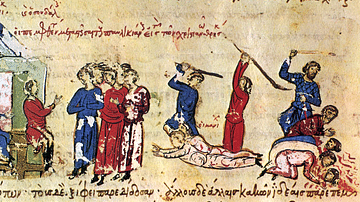
Image
Massacre of the Paulicians
The massacre of the Paulicians in 843/844 CE.
Chronicle of John Skylitzes, cod. Vitr. 26-2, fol. 69, Madrid National Library

Image
Jan Hus Being Burnt at the Stake
Diebold Schilling's Spiezer Chronik (1485 CE), Burgerbibliotheek Bern.
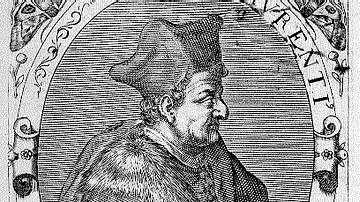
Image
Lorenzo Valla
Lorenzo Valla (1407-1457 CE) by Jean-Jacques Boissard, 17th century CE.
University Mannheim.

Image
Coronation of Pepin the Short
Coronation of Pepin the Short in 754 CE by Pope Stephen II.
Grandes Chroniques de France, illumination by Jean Fouquet, Tours, c. 1455-1460 CE.
Bibliothèque nationale de France, Paris, French Manuscript 6465, fol. 76.
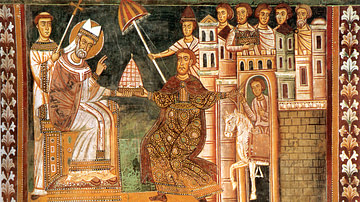
Image
Donation of Constantine
Sylvester I (served 315-335 CE) and Constantine the Great (r. 306-337 CE), San Silvestro Chapel at Santi Quattro Coronati, Rome.